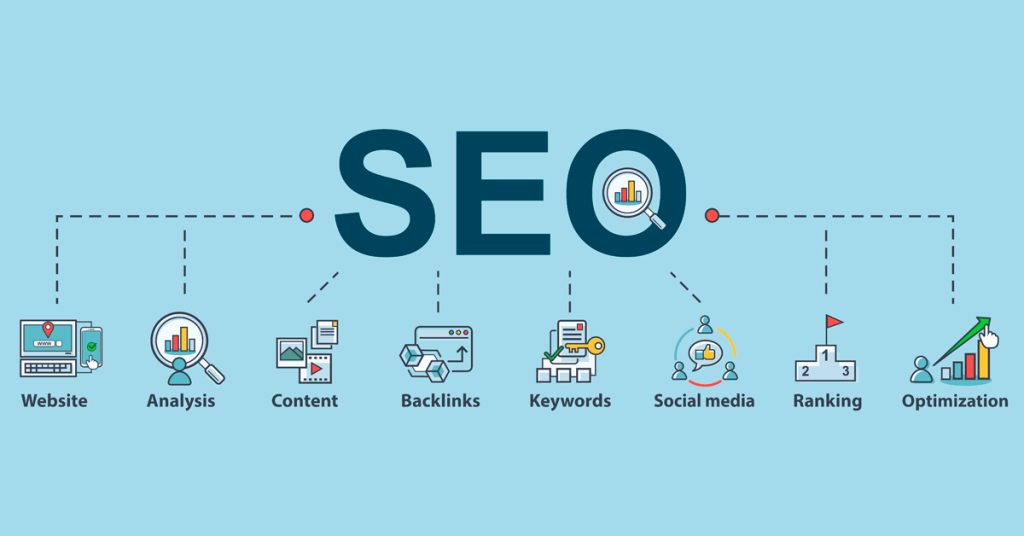In today’s digital landscape, dominated by visuals, images play a crucial role in grabbing attention, enhancing the readability of content, and bolstering SEO efforts. While many are familiar with fundamental image SEO practices such as incorporating alt text, there exists a plethora of advanced techniques that can significantly elevate your image optimization. This guide delves into those potent, yet often overlooked strategies, ensuring your images do more than just adorn your site—they actively contribute to improving its ranking and user experience. Elevate your rankings and enhance your website’s appeal with expert SEO services by tapping into these advanced image optimization techniques.

Understanding Image SEO
Image SEO is the process of improving your images so that they will be noticed by search engines. But it’s not just about ranking higher in image searches. It’s also about making your website faster by optimizing image sizes. It includes helpful alt tags for availability, and improving user experience by delivering content that looks good. If it is done properly, image SEO can significantly improve your website’s overall SEO performance, resulting in increased visibility and engagement.
Why Image SEO Matters
- Improves User Engagement: Optimized images may greatly improve user attraction and stay on your website.
- Improves Page Speed: Optimized images to load faster, which contributes to higher page speed, a critical SEO ranking factor.
- Increases the Visibility: Optimized images will appear in image search results, and can get more customers to your website.
Advanced Image SEO Strategies
Doing beyond the basics, these advanced strategies will help you maximize the SEO value of your images.
Selecting the Right Format
- Recognized Image Formats: Make sure that you are using the proper format (JPEG, PNG, WEBP, etc.) based on its image type and its quality. JPEG for photographs and PNG for graphics with transparent backgrounds.
- Leverage Next-Gen Formats: Use next-generation formats such as WEBP, because they offer better compression and quality than traditional formats.
Optimizing Image File Names
- Descriptive File Names: Use precise and descriptive file names with relevant keywords to help search engines understand and rank your images properly.
- Use Hyphens, Not Underscores: When creating words in file names, use hyphen as spaces, do not use underscores.
Mastering Compression and Quality
- Managing Act: Reduce images to minimize file size without losing quality. Use tools like Adobe Photoshop, TinyPNG, and ImageOptim.
- Responsive Images: Create responsive image practices to show different image sizes based on the gadget used by the consumer, boosting loading times and overall user experience.
Enhancing Accessibility and Context
- Alt Text Nuances: Go beyond basic descriptions in your alt text. Make it contextually relevant to the content of the page, incorporating keywords naturally.
- Surrounding Text: The text around your images can give additional context to search engines, helping to improve the image’s relevance and ranking.
Structured Data and Sitemaps
- Structured Data: Use structured data markup so that search engines will know more information about your images and are classified for rich results.
- Image Sitemaps: Make an image sitemap or put images in your current sitemap so that search engines can find all of the images on your website.
Leveraging Image Captions and Titles
- Captions: When appropriate, add captions to images. Users tend to read captions, and they can also provide SEO value when they contain relevant keywords.
- Titles: While not as crucial as alt text, image titles can offer additional context and keyword optimization opportunities.
The Role of Social Media in Image SEO
- Open Graph Tags: Use Open Graph tags to control how images are displayed when your content is shared on social platforms, enhancing visibility and engagement.
- Pinterest Optimization: For image-heavy content, consider Pinterest optimization by ensuring images have descriptive, keyword-rich titles and descriptions when pinned.
The Impact of Site Architecture on Image SEO
Your website’s architecture can significantly affect how search engines crawl and index your images.

Lazy Loading for Efficiency
- Execute lazy Loading: Lazy loading delays the loading of images until they are in or near the viewport, reducing initial page load times and conserving bandwidth.
Hosting Considerations
- Host Images on Your Domain: If possible, host images on your own domain instead of using external services to ensure that search engines connect them with your website.
Conclusion
Optimizing images involves not only adding alt text; it also includes many kinds of strategies to make sure that images improve your site’s SEO, speed, and user experience. You can make sure that your images are working hard for SEO by choosing the right formats, optimizing file names and sizes, improving accessibility, and utilizing structured data. Remember, in modern visually saturated web environment, well-optimized images can mean the difference between blending in and standing out.

